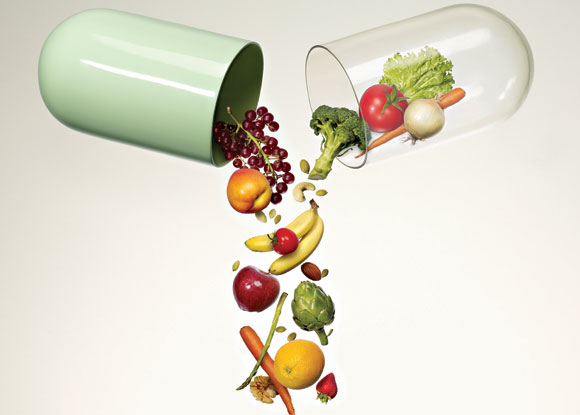Words To Eat by...Superfoods, Let’s Get It Right

Words To Eat by...Nutrition Insight Designed for Readers to Discover, Inspire & Engage
Superfoods, Let’s Get It Right
by Chris Moore, MS RDN CC
Superfood is a term often used by more conscious, health foodies, or heard resulting from the latest medical conference news blast. It’s usually tied to some single food with miraculous power. Although slightly different, superfoods are interchangeable with other terms: antioxidants (fights, against oxidation), whole food phytochemicals (plant based chemicals), not oral supplements, and functional foods. Either of these terms is correct for this discussion.
Superfoods, antioxidants, phytochemicals all yield key nutrients thought to provide certain healing properties; none, by the way, are regulated by Food Drug Association (FDA). Some superfoods are reported to reduce certain cancers and other disease risk; many continue to be under research and some remain controversial. All foods technically are functional as they yield certain macronutrients (carbohydrate, protein and fat) and micronutrients (vitamins, minerals or fiber).
The common denominator of superfoods, antioxidants and phytochemicals is they are all considered nutrient-dense. Which means the specific food yields more key nutrients compared to calories per serving; thought to release certain bioactive chemicals to reduce disease and protect healthy cells; not a processed food and finally, not considered an ‘empty calorie’ food source.
Although there are tens of thousands of superfoods, antioxidants and phytochemicals known, the average consumer is aware of only a few thanks to popular headlines and the isolation of just a single food. Ever heard or read, “Struggling with memory”, try blueberries; ‘having frequent colds”, bump up your edamame (green soybeans); “need to lower your cholesterol or constipation”, try a little flaxseed; and the answer to every ailment, garlic. There’s no argument each of these foods are great in the diet, endless ways to use them, and yes, even tasty (garlic may be an exception).
If we look at the food group or the entire family of phytochemicals instead of just these four foods, the list of superfoods is much more extensive for your choosing and there are significant more alternatives. Still, your overall consumption and lifestyle must be factored into the reduced health risk or prevention equation. Loading up on garlic and still smoking, or piling on the blueberries (and everything else) with no physical workout, well… let’s just say, you have really missed the message and truly may not be reaping the intended benefits.
For clarity of this writing, let’s just narrow superfoods and it’s counterparts down to one term, phytochemicals. The role of diet is well documented in reducing health risk. And with the prevalence and early onset of obesity in both young and old and the rise of chronic disease (diabetes, hypertension, certain cancers), the opportunity to impact our diet with higher intakes of whole food phytochemicals is significant. Knowing key sources of these foods and incorporating them more in our daily eating habits, balanced with physical activity should be our strategy. The fact remains we no longer should eat for just taste or to satisfy a hunger, but for our health and well-being.
In addition to those foods mentioned above, phytochemicals include many additional foods in a rainbow of colors: seeds, endless variety of nuts, legumes (beans), fruits and vegetables and grains (all conventional foods); leafy greens, carrots, sweet potatoes, butternut and acorn squash; broccoli and tomatoes (carotenoids); also Brussel sprouts, cauliflower, cabbage, collards, arugula, Bok choy, not just kale (cruciferous or brassica vegetables).
Even probiotics, live bacteria and fermented sources (yogurt especially Greek forms offering a higher protein content), Kefir - if you can get it pass your nose; Kimchi and sauerkraut for gut health are also great sources. List of phytochemicals are categorized by key chemical names: lignans, isoflavones, indoles, capsaicin, tannins, etc. and means little to most. Don’t stop there.
Read further and focus more on the food source of each, which are more familiar than the chemical names I have noted here. When the headlines mentions a single food, and it’s not your preference, little pricey for the pocket, or you simple have no idea what it is or how to prepare it, just know you have options. Find what you like and choose accordingly. Since phytochemicals, antioxidants, or superfoods are not regulated by FDA, no daily requirements are established.
However, general guidelines recommended for daily intake of fruits and vegetables (5 servings) and grains (6 – 11 servings), with at least half derived from whole grains would be a safe and minimal goal for adults to attempt. Look for opportunities to try unfamiliar foods at local community classes, in store grocery samples, or search for recipes and try it yourself and family.
Take charge of your health and start with your plate, with more phytochemicals (AKA, superfoods!).
A full detailed list of phytochemicals and more reading can be found at:
HEALTHY EATING TIPS
AICR'S FOODS THAT FIGHT CANCER
SOURCES OF PHYTOCHEMICALS
50 BEST SUPERFOODS LIST
